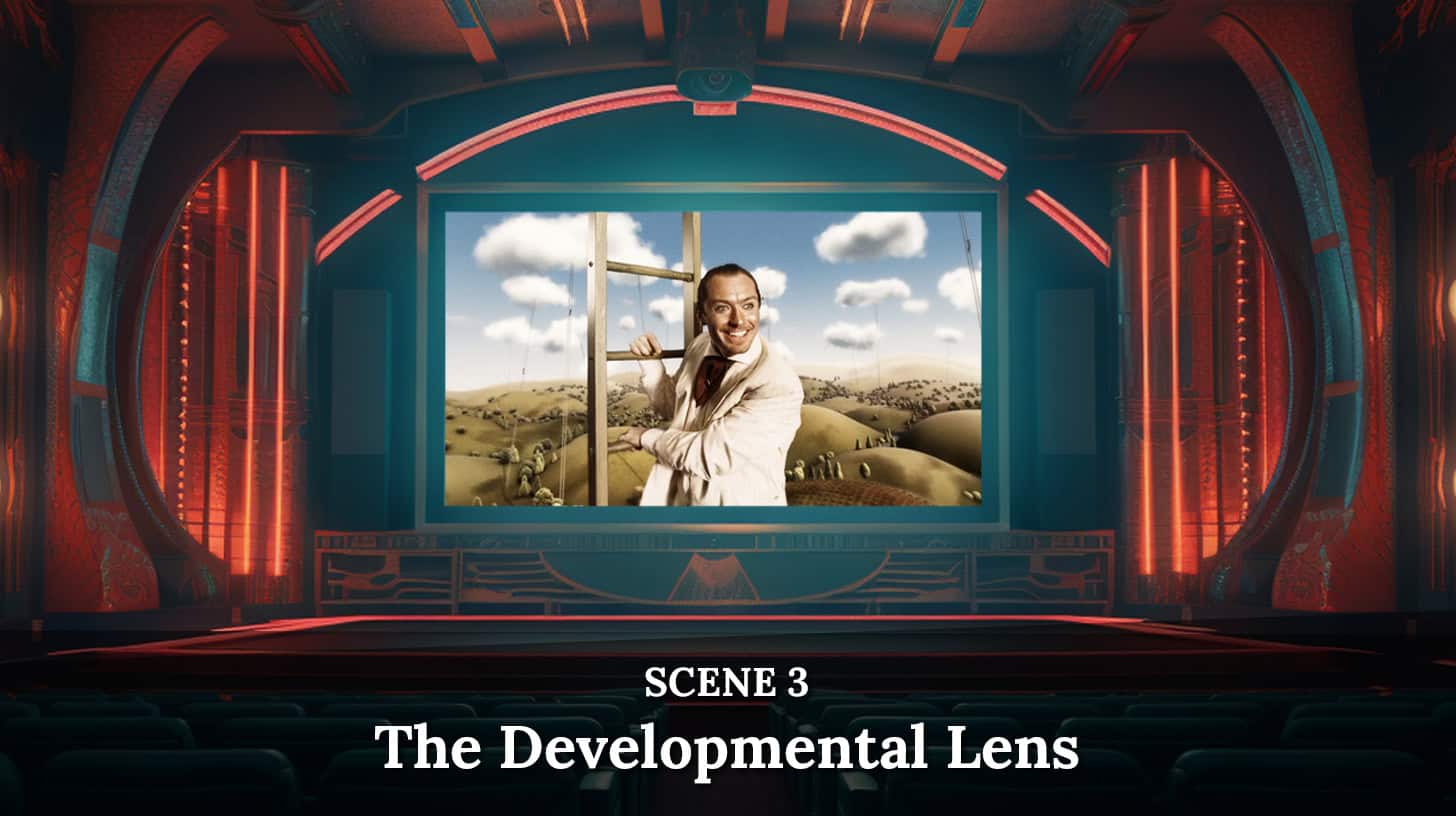
Having previously explored the HOLONIC LENS and the QUADRATIC LENS, this time we will explore what I am calling the DEVELOPMENTAL LENS. The Developmental lens includes two separate yet intimately connected perceptual lenses: LINES and LEVELS of development.
If we look closely through the Quadratic Lens we see that within each quadrant, there are various lines of development. For example:
- Emotional, cognitive, moral lines of individual-interior development;
- Cultural values and worldview development in the collective-interior;
- Biological and skeletal-muscular growth in the individual-exterior;
- Ecosystem growth in the collective-exterior.
We also see that each of these lines can evolve through various levels or stages of development. For example:
- Expanding circles of care and concern in moral development;
- Expanding cultural and cross-cultural awareness in worldview development;
- Stages of organic brain development;
- Stages of Economic and Technological development.
Lines and Levels of Development in All Four Quadrants
In the cinema there are several areas where we find Lines and Levels of Development, including the various character and narrative plot lines that develop and evolve through the levels of set-up, conflict, climax, and resolution in classic cinematic structure.
For example, in The Matrix Trilogy (1999-2003), numerous inner and outer character, relationship, story-event, and social/environmental/systemic developmental lines evolve in parallel through the films various levels of character and narrative development.
Character-Relationship Development in The Matrix Trilogy (1999-2003)
Below are a just a few of The Matrix Trilogy’s various lines of development in each of the quadrants:
Examples of The Matrix’s Various Lines of Character and Narrative Development by Quadrant
In addition to lines of character and narrative development, there are also numerous audio and visual lines of expressive element development that also evolve through the same stages or levels of development, as well as often having their own parallel levels.
An example of the creative use of parallel and intertwined audio, visual, character, and narrative development can be seen in The Imaginarium of Doctor Parnassus (2009), where characters who enter the Imaginarium are transported into an abstract imaginary world that reflects their own self, culture, and world in narrative, visual and auditory form; and then this audio, visual, and narrative imaginary world proceeds to help them evolve to the next level of their development.
The Imaginarium of Doctor Parnassus (2009)
The stages or levels of development of a cinematic work can also vary greatly from work to work, from a simple beginning, middle and end structure, to numerous levels or acts. The Imaginarium of Doctor Parnassusis a good example of the use of numerous levels or acts, based not on classic narrative structure, but rather stages based on the inner development of all its main character’s.
There are also two major types of development:
- Vertical development is development that moves through complete stages or levels of development.
- Horizontal development occurs within a specific stage or level.
For example, in a simple love story, a character can develop vertically from egocentric to ethnocentric or from being self-centered to We-centered; or a character can also develop horizontally from dysfunctional to functional (or from lack of ability to competency, etc.) within a level like ethnocentric or from being We-centered but blocked by a fear of intimacy to overcoming their fears and being able to fully love.
Bringing us back to the Holonic Lens, we are reminded that development evolves holonically in that each level or stage of development is a whole that is transcended by and included as a part of the next level or stage. The beginning of a story is a whole that is transcended by and included in the middle, and the middle is a whole that is transcended by and included in the ending.
Since the Developmental Lens holonically incorporates Lines and Levels of Development with the Quadrants, this lens can also be a powerful synthesizing tool for the cinematic artist.
Poor use of the Developmental Lens can lead to cinematic works with major developmental holes or incomplete or obscure character, relationship, story, and visual or auditory thematic expressions, which in turn reduces viewer involvement and immersion in the work.
Conversely, skilled and masterful use of the Developmental Lens can produce cinematic journeys that take us progressively to deeper and more expansive immersive experiential realms, and potentially model for the viewer the possibility of their own developmental evolutionary capacity.
Related Media
Toward an Integral Cinema
Mark Allan Kaplan
Defining characteristics of what may constitute an integral cinematic work are mapped out and developed into a set of evaluation criteria using the works of Dulac, Gebser, and Wilber. A test of these evaluation criteria with the viewing of several motion pictures is summarized; the results suggest that several past and recent films demonstrate qualities that could be said to constitute an integral cinematic work.
Integral Cinema Studio: A Comprehensive Guide to the Cinematic Experience
Mark Allan Kaplan and Ken Wilber
Mark Allan Kaplan has been curating a groundbreaking integral project, something he calls the Integral Cinema Studio. In this remarkable exploration, Mark and Ken walk us through all of the main elements of Integral theory, using some of our favorite movies to illustrate the basics of the Integral approach while noting how each of these elements has shaped the cinema experience since the invention of film itself.
About Mark Kaplan
Mark Allan Kaplan, Ph.D. is a Transdisciplinary Artist, Filmmaker, Researcher, Consultant, Educator and Media Psychologist focusing on Integral, Transpersonal, and Transformative approaches to Art, Media, and Spirituality. Mark is currently exploring various applications of Integral Theory, including the research and development of an Integral approach to cinematic media theory and practice.
